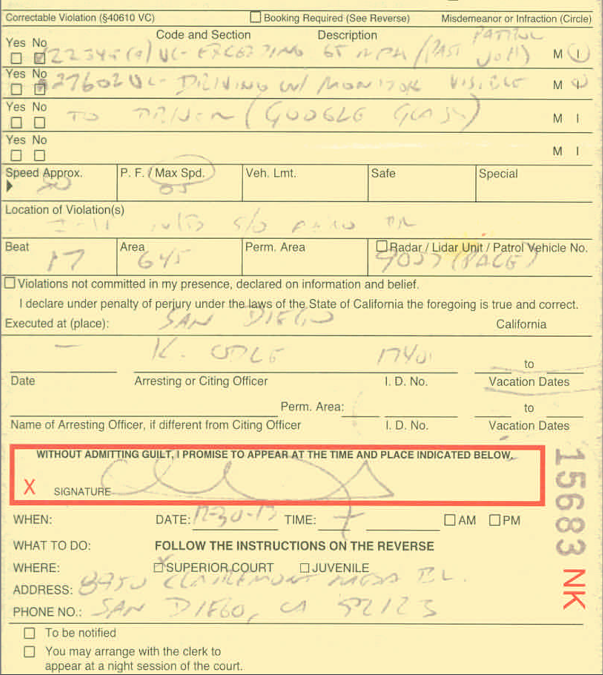Google Glass Speeding Ticket Strikes: Changing The Law
Today there's a buzz about a speeding ticket issued in California with an additional note about wearing Google Glass. The original post appears courtesy of Cecilia Abadie who provided a rather clear scan of the ticket she recieved. This ticket suggests that while Abadie was pulled over for speeding – 80 miles per hour in a 65 MPH zone – then was cited for Driving with a Monitor Visible (that's Google Glass). Now comes the time when we see how the law changes for devices that aren't covered in the original writing for this particular "Television" code in California law – then in laws across the USA and the world, soon after.
Having a peek at a rather thorough exploration of this subject by Android Central's Phil Nickinson, we see the statute this particular citation works with. It's called V C Section 27602 Television in the California Department of Motor Vehicles listing of statutes. Here we see that the statute covers a number of devices as exemptions to the law that no displays are visible to the driver while they're driving.
Click the thumbnail above for a full-sized image of the ticket in question.
These exemptions include a vehicle information display, a global positioning display (GPS), a mapping display, a "visual display used to enhance or supplement the driver's view forward, behind, or to the sides of a motor vehicle for the purpose of maneuvering the vehicle", or one of the two following items:
1. A television receiver, video monitor, television or video screen, or any othersimilar means of visually displaying a television broadcast or video signal, if that equipment satisfies one of the following requirements:
The equipment has an interlock device that, when the motor vehicle is driven, disables the equipment for all uses except as a visual display as described in paragraphs (1) to (4), inclusive.
The equipment is designed, operated, and configured in a manner that prevents the driver of the motor vehicle from viewing the television broadcast or video signal while operating the vehicle in a safe and reasonable manner.
2. A mobile digital terminal that is fitted with an opaque covering that does not allow the driver to view any part of the display while driving, even though the terminal may be operating, installed in a vehicle that is owned or operated by any of the following: an electrical corporation, a gas corporation, a sewer system corporation, a telephone corporation, a water corporation, a local publicly owned electric utility, a city, joint powers agency, or special district, if that local entity uses the vehicle solely in the provision of sewer service, gas service, water service, or wastewater service.
Otherwise you're not really allowed to have a display within your immediate field of vision if you're a driver. It'll be interesting to see if this includes the likes of smartphones on stands or smart watches in the immediate future as well – and the social implications therein. For now – the press surrounds this sort of subject because Google Glass is in and of itself interesting.
As captured by Glass Almanac, Abadie suggested that she repeatedly said to the officer that the display on Glass was not on while the vehicle was in motion, while the officer, she said, "kept saying it was blocking my view." Should Abadie take this to court – she will have to if she plans on arguing the point – she'll likely want to bring up the idea that while Google Glass is off, it's just a piece of glass, after all.
In the end – and perhaps more important than the issue of Glass here in the first place – the ticket was issued for a speeding violation. Any argument will be made on behalf of the secondary citation, not the first.
What do you think?

